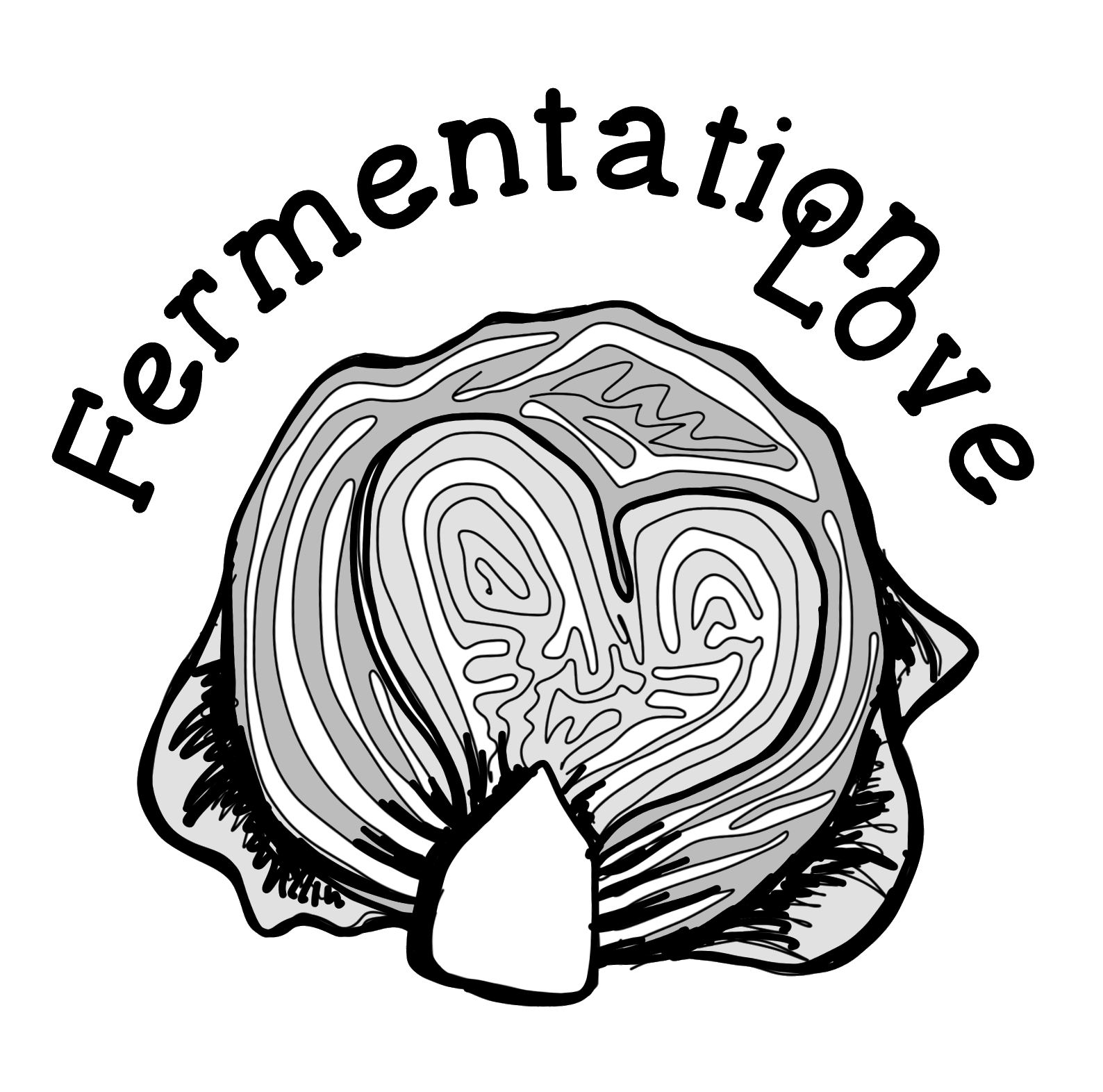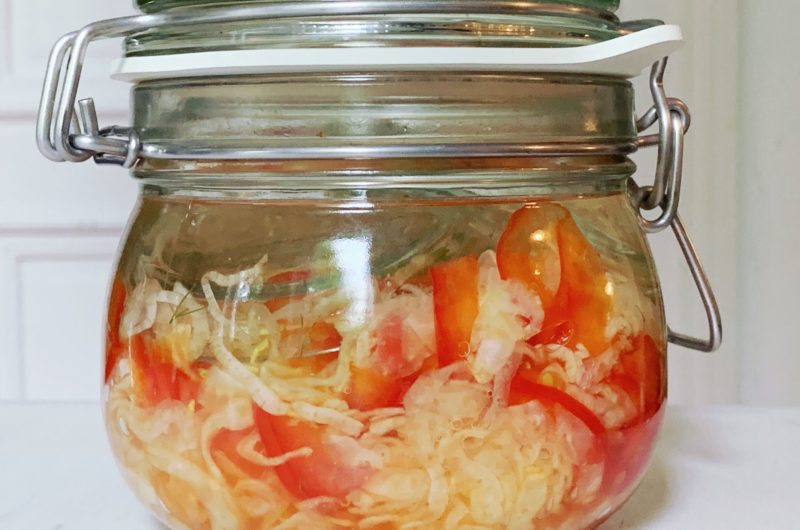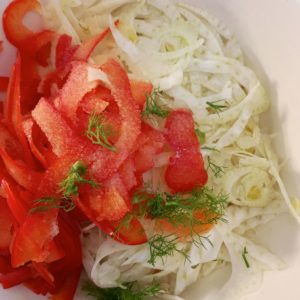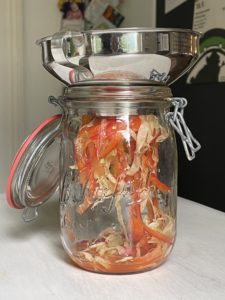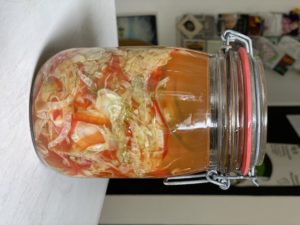Fermenting fennel is always a good idea, and fennel with bell pepper is a real umami bomb. This fresh, savory side dish is especially good for a barbecue.
Fresh fennel bulbs are available, just in time for the BBQ season, from early summer through fall. By the way, you can recognize fresh fennel by the abundant amount of the aromatic, light green fennel fronds that winter fennel lacks.
In summer, the red bell pepper is also available ripe. Like the tomato, the bell bell pepper is botanically a fruit, but culinary a vegetable. A raw red bell bell pepper is 94% water, 5% carbohydrate, 1% protein, and contains very little fat. It is a rich source of vitamin C, vitamin A and vitamin B6. A red bell bell pepper provides twice as much vitamin C and eight times as much vitamin A as a green bell bell pepper. In addition, it tastes more sweet, and in this ferment it also provides the visual highlight in terms of color.
Fennel with peppers is a treat for the palate as a fresh salad; fermented, the delicate flavors complement each other even better, creating a veritable feast for your taste buds.
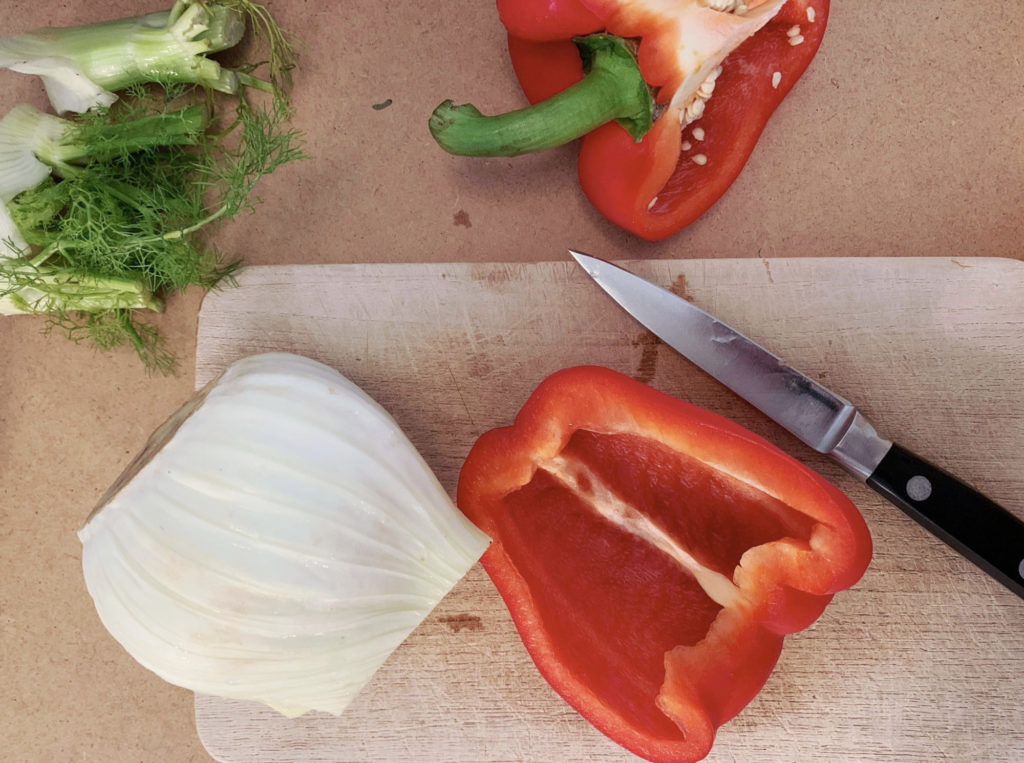
Fermented sweet bell pepper becomes soft
Red bell pepper is a vegetable that is actually not suitable for lactic acid fermentation. Due to its high water content, it becomes somewhat soft, almost mushy, and therefore not very edible in terms of consistency. However, very finely shaved, as in this ferment, this does not stand out negatively. Yes, the bell pepper becomes soft, but complements the fermented fennel perfectly. And not only by the fine, still slightly sweet acidity, but indeed by the almost creamy softness.
Fermented fennel with bell pepper and chili is a fabulously sweet and sour delicacy!
The ferment is a great topping for cold tofu! It also goes great as a garnish for spare ribs.
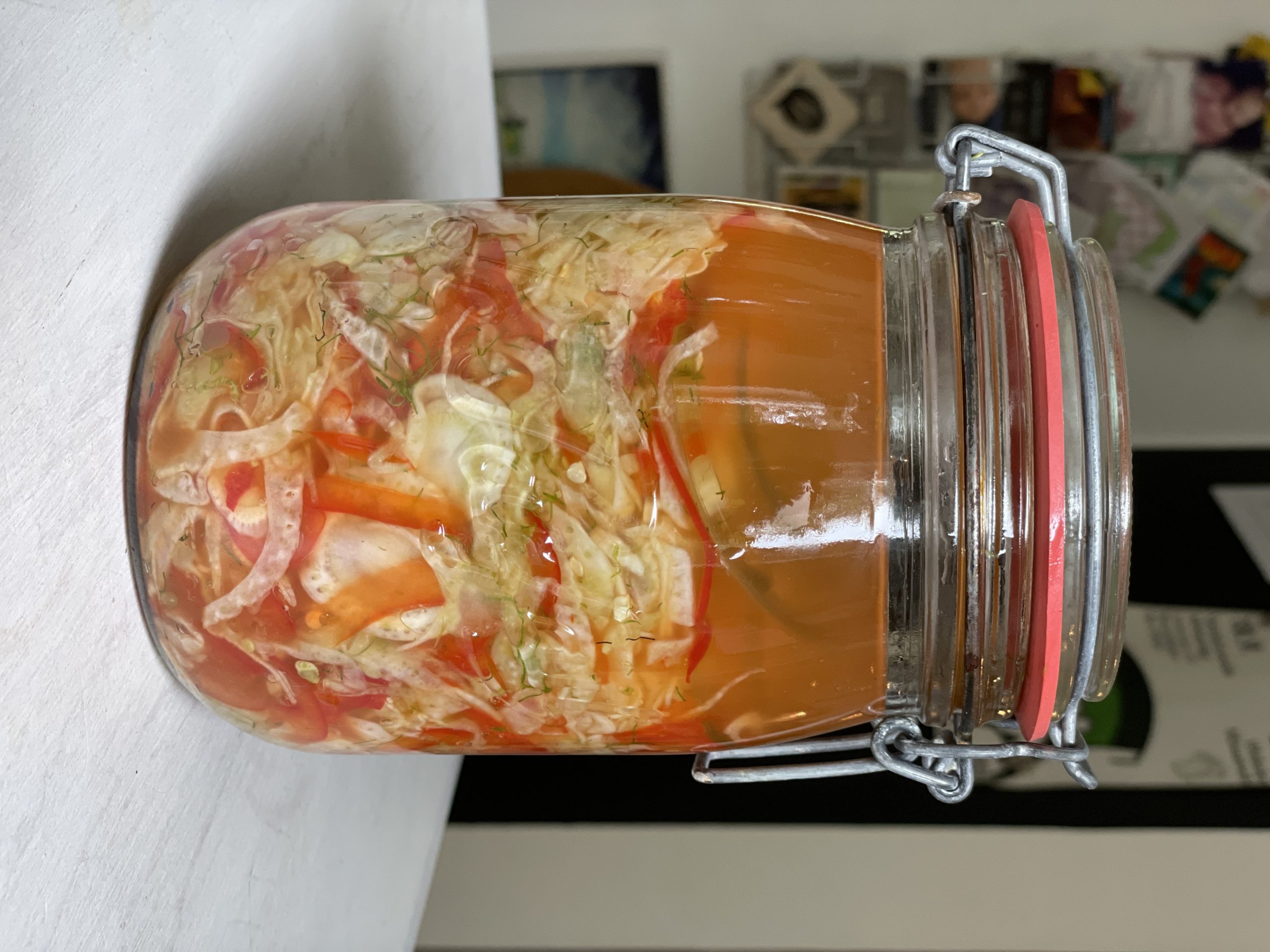
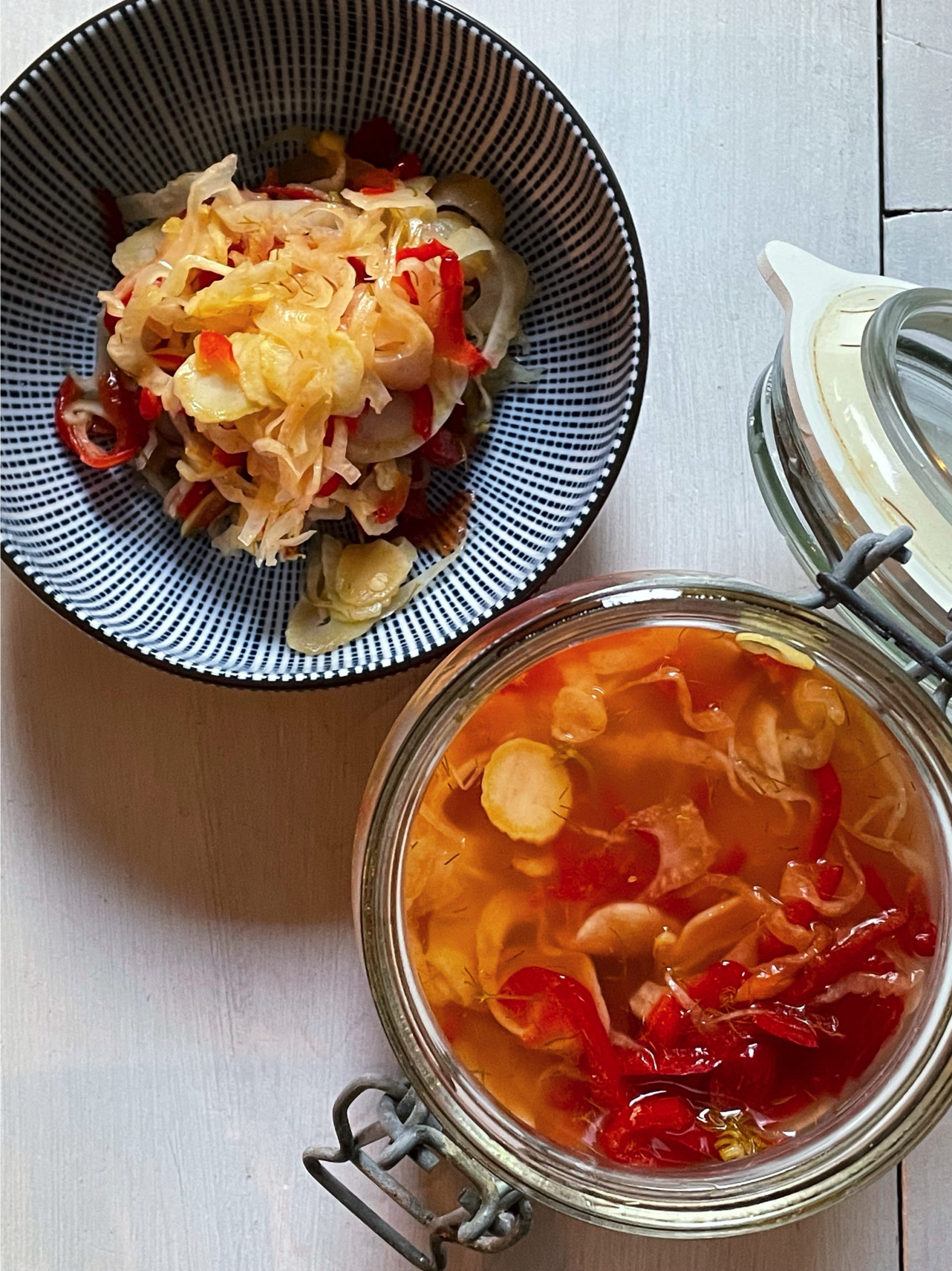
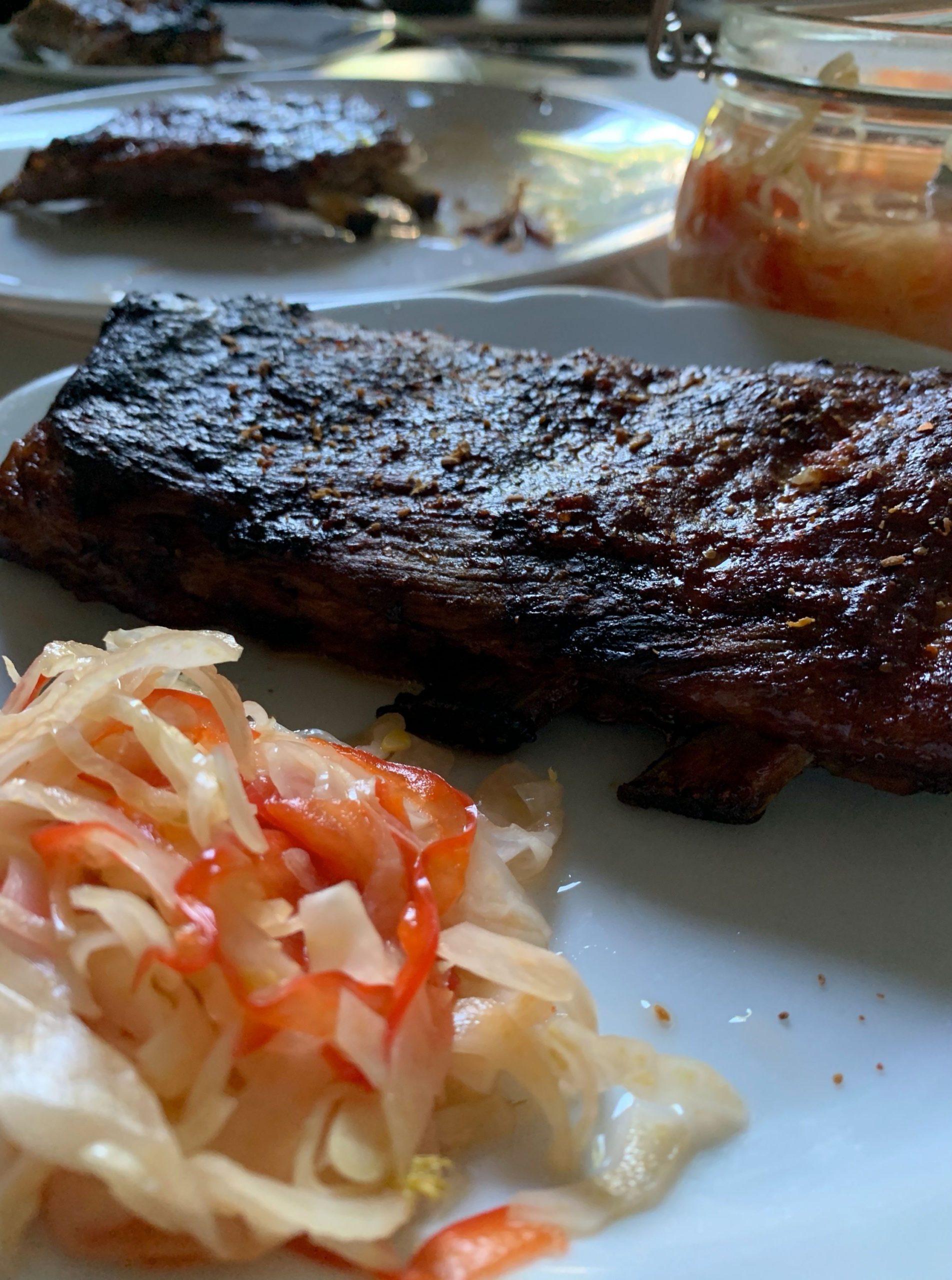
Do you know my other combination with fennel and beetroot? If you like fennel, you have to try this too!
